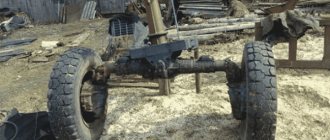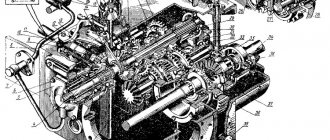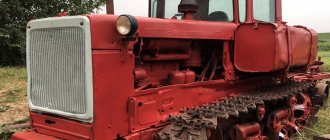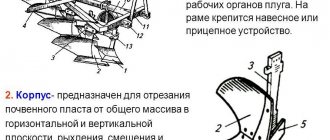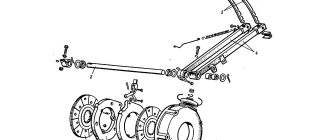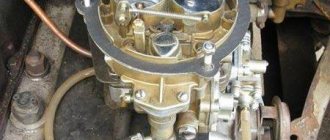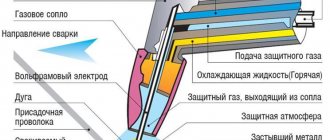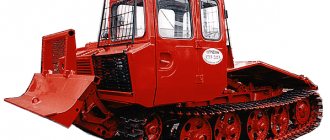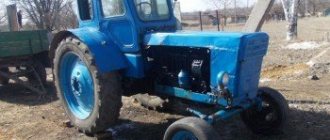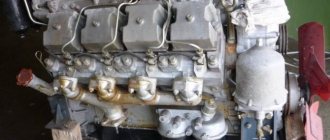- home
- Media center
- Articles
- Maintenance of the T-150 tractor
Menu
- News
- Articles
- Video materials
- Photo materials
- Publication in the media
- 3D tour
27.07.2021
Maintenance of the T-150 tractor, produced at the KhTZ plant, is a range of scheduled maintenance work that is carried out in order to increase the service life of the machine. Timely implementation of these procedures allows you to identify malfunctions at an early stage, protect mechanisms subject to particularly heavy loads, as well as from excessive wear. This reduces the risk of sudden breakdown, which is especially important during seasonal agricultural work, in which this special equipment is often used. The exact list of actions depends on the order of maintenance and mileage.
TO No. 1: basic procedures
The first maintenance of the T-150 is performed after 60 operating hours and is repeated at a specified interval. The list of procedures includes the following actions:
- Visual inspection, washing of the body.
- Check the quality of tension of the drive belts of the generator and compressor with fan; if necessary, adjust them.
- Determining the pressure in tractor tires, inflating them in case of insufficient number of atmospheres.
- Check the battery, if necessary, add distilled fluid.
- Inspect the fasteners and tighten them.
- Updating lubricants, monitoring the oil level in the crankcase, gearbox and hydraulic tank of rear attachments.
- Checking the condition of the track rollers and the presence of lubricant on the axles of the central link of the rear linkage.
- Determining the level of coolant in the radiator and refilling it if the quantity is insufficient.
- Checking the volume of settled and filtered fuel in engine tanks.
- Maintenance of the air cooler, diagnostics of the condition of the spray nozzle, cleaning of internal surfaces and filters.
Equipment
The following additional mechanisms can be attached to the Kharkov tractor:
- Bulldozer blade. Clears roads of dirt and snow. Can level areas of earth or rubble.
- Plow. Used for arable work.
- Trailer machine. Helps in transporting cargo weighing up to 20,000 kg.
- Automatic coupler for railway. Helps to operate a rail tractor made on the basis of HTZ-150K.
- Mechanism for sowing. The seeder helps to carry out sowing work.
- Cultivation mechanisms.
Be sure to read: Tractor MTZ 2022 Belarus
List of maintenance actions No. 2
The second maintenance of the T-150 tractor is carried out after every 240 operating hours. The following procedures are added to the actions for the first maintenance:
- Checking the distance between the ring of the clutch levers and the bearing shell, changing it according to the regulations, as well as diagnosing the brake of the clutch shaft and the brake system.
- Washing the cassette, filter and deflector in the air cleaner system, applying oil to the surface first.
- Maintenance of the power system, which is expressed in draining the settled fuel, replacing the coarse filter and washing the fine filter, as well as removing deposits from the tank lid.
- Procedures with electrical equipment. This includes inspecting the battery mounts, cleaning the battery surfaces, applying lubricant to oxidized terminals and contacts, diagnosing the wiring and isolating damaged areas if they are found.
- Pulling mounts for the engine, tractor cab, gearbox, cardan, as well as rear axle yokes and attachment shafts.
- Changing the oil in the crankcase.
- Checking the lubricant level in the balancing device axle wheels, road wheels, final drives and chassis shock absorbers.
- Processing of shaft bearings, steering rods, cardan splines.
- Flushing the turbocharger filter and rear axle breather.
In addition, the T-150 tractor is re-maintained every 480 operating hours. This includes mechanical cleaning of the air cleaner cyclone filters, adjusting the distance between the engine valves and the rocker arm, checking the gearbox coupling and adding oil to the drive cavity. Also, during intermediate maintenance, the pressure filters of the gearbox hydraulic system and rear attachments are washed, and grease is applied to the cardan cross bearings.
Gearbox T-150
The force from the engine is transmitted to the transmission mechanisms through a dry friction clutch. The gearbox is designed to change torque and consists of two parts: the main one and the transfer case. Each of them has separate housings, rigidly connected to each other. The gearbox is a manual step-by-step transmission with 12 speeds distributed between four ranges: slow, working, transport and reverse. The unit is equipped with two shafts: a drive and a driven with helical gears of constant mesh. Speed shifting is carried out on the fly using hydraulic clutches. This avoids interruption of the power flow within the same range. When upshifting or downshifting, its fluid coupling is activated within a few milliseconds. Only after this the previous power flow is disconnected. The operation of the gearbox is controlled using a lever, which is moved to the desired position by the tractor driver. The range selection is made only after the machine has completely stopped.
The design of the mechanism contains a device that blocks the ability to start the engine when the gear is engaged. A mechanical transfer case with two operating ranges is designed to distribute power flows between the rear and front axles. The latter is connected as needed when driving with maximum load or off-road. The operation of the gearbox is ensured by its own hydraulic system, which includes:
• a gear pump with a capacity of at least 35 l/h; • intake and main filters; • discharge line; • distribution device with bypass and safety valves; • cooling radiator; • hydraulic accumulator; • hose and lines. To change gears, the tractor driver depresses the clutch and moves the lever to the required position. The spool that controls the process has four pairs of holes that allow you to select any of the modes within the range arbitrarily through one or two gears.
Algorithm for performing maintenance No. 3
The third maintenance of the T-150 tractor is performed every 960 operating hours or after consuming 19,200 liters of fuel. The procedure includes diagnosing the main components of the equipment, washing the filter parts and replacing worn elements, recharging the battery when discharged by 25 and 50% in the winter or summer season. Also, during the third maintenance of the T-150 tractor, the following actions are carried out:
- Processing of ignition system components.
- Adjusting the central brake.
- Diagnostics of the intermediate support of the cardan transmission.
- Changing the clearance in the bearings of the drive gears of the main gears.
- Studying the condition of bearings of wheel reducers, their adjustment.
- Flushing crankcases with diesel fuel, filling with fresh oil.
- Filling the support of the cardan drive of the PTO mechanism with solid oil with injection until the excess is squeezed out, lubricating the tachograph device shaft cable.
Interim third maintenance of the T-150 tractor is performed every 1920 operating hours. The process includes purging the space between the cyclone filter elements of the air cleaner, diagnosing the starter with disassembly, washing the oil intake screen and mechanically cleaning the cylinder head from traces of soot.
Modifications of the T-150 tractor
On its basis, a family of self-propelled vehicles designed to perform different types of work has been created. The Kharkov Tractor Plant produces the following modifications of the T-150:
T-155 is an army engineering vehicle
used to perform engineering defense work and tow artillery pieces of various calibers. Light wheeled tractor T-155 with special equipment for engineering troops and artillery. The modification has a bulldozer blade and a module for digging trenches and performing other earthworks. The tractor differs significantly from the basic version in the design of the towbar; instead of a pendulum suspension, a standard hook is installed. A loading platform is mounted on the elongated rear semi-frame.
T-156 is a front-end loader
, designed to perform loading operations and has special equipment in the form of a capacious bucket with a volume of 1.3 cubic meters. The tractor is equipped with 8 headlights to illuminate the work site; another 6ST battery has been added to ensure operation -140A3.
LT-157 is a skidding tractor
designed specifically for work in the forest. The main differences from the basic version: the presence of a safety cage, improved heat and noise insulation of the cabin. The machine is equipped with a skidding choker, a powerful winch, a steel shield and a bulldozer blade; upon special order, it can be equipped with a pincer grip.
T-158 is an industrial wheeled tractor
designed to perform technological and transport operations. It is equipped with a towing hook with a damper and a fifth-wheel trailer hitch.
T-150KD - equipped with a bulldozer blade
. The rotation angle is 25 degrees in each direction, the knife width is 2520 mm, the lowering depth is 300 mm and the lifting height is 700 mm. All presented versions of the T-150K tractor are made of standard components and mechanisms. Unification simplifies the supply of organizations and enterprises with spare parts, consumables and components.
Actions when operating in difficult conditions
Additional procedures are required when using special equipment in particularly difficult conditions. Recommendations:
- When working on sandy soil and in the desert, it is necessary to fill the diesel engine and fill with oil using a closed technology. During each maintenance No. 1, it is necessary to wash the cassette with the air cleaner deflector, as well as the filter element of the starting device.
- When using equipment during severe frosts, seasonal maintenance, pre-heating of the engine and refueling with Arctic diesel fuel are recommended if the air temperature drops below -30 degrees Celsius.
- During operation on swampy ground, it is recommended to clean the outer parts of the radiators every shift, inspect the chassis and powertrain mechanisms for liquid ingress, and change the oil if necessary.
- When working in rocky areas, before each shift it is necessary to inspect the chassis and protective devices for mechanical damage, and check the quality of fastening of the crankcase drain necks.
Timely maintenance of the T-150 tractor will significantly extend its service life and avoid costly repairs in the midst of work.
Design and scope of application
- The power of the standard power unit allows the use of a multi-share plow, a wide-cut cultivator or energy-intensive harvesting units.
- The size of low-pressure tires provides a moderate specific weight on the ground, increased cross-country ability in areas with waterlogged and sandy soils.
- In practice, the effectiveness of aggregating the machine with different types of mounted, semi-mounted and trailed equipment has been proven. Moreover, technical developments from 40 years ago turned out to be relevant to this day.
The 150th model tracked tractor of the first series turned out to be less successful, however, during the production process many of its design and production shortcomings were completely eliminated.
Based on the basic tractor, several versions were developed, including the T-155 light tractor, the T-157 skidding version, and the T-150KD bulldozer. The army model T-154 was adopted as an engineering and artillery tractor.
This is interesting: Trailed roller header: technical characteristics, design, photos and videos
